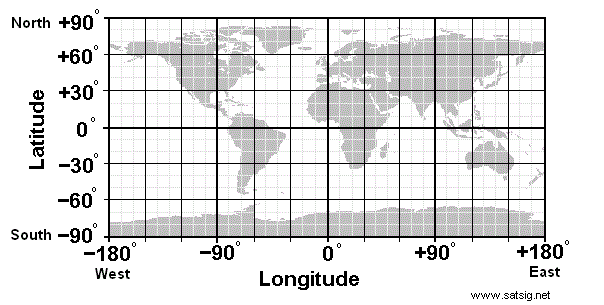
A given latitude at the equator extends from 0° to 180° (either W or E) with two posters on both ends. A given longitude (0°) equal to the latitude and extending from one pole to the other with two poster at both ends. The conscious day begins for all four with the two posters on the latitude exchanging posts between each other and the two posters on the longitude exchanging posts. What is the relative frequency of the posting cycles on each line?
I say that given any two longitudes and latitudes of equal length (or arc), with two posters posting between themselves from the extremes, that the two posters on the longitude will have a higher frequency of post exchanges between them throughout a conscious day.
On the map, place two posters at the extremes of a longitudinal area. Place one poster at the tip of Cape Horn, South America and the other poster in New Brunswick, Canada. Place two other posters at the extremes of a latitude equal to the length of the said longitude, one at London, UK and the other in Irkutsk, Russia. All other factors being equal (purpose, interest, speed of connection, etc.) the two on the longitude will have a higher frequency of exchanges than those on the latitude.
Let's form two groups of equal numbers and spaced evenly apart from one end to the other, one group on the longitude and the other on the latitude. The group on the longitude will have more opportunities for exchanges and will have more options to organize temporally and ordinally with greater facility than the group on the latitude.
What is the "comfort zone" of any one poster? If I live in one time zone, the further away another poster is from that zone, the more inconvenient it is to meet together. I would say that, of the 360º on the globe, the comfort zone is just about 90º to 120º (45º to 60º on either side of the longitude I reside upon). If it is 120º, then I can divide the 360º of the entire globe into three zones of 120º each, and I will call them:
The Americas
Europe, Middle East and Africa
Far East and South Pacific
The geographical distribution is incidental because anyone sharing the same conscious day with a zone is qualified for membership in a group in that zone.
In this blog, I am treating time as if it were a geographical limitation. If I do this, I can easily translate the organizational structure of the traditional service club to online communities of practice, with democratic forms fully intact. Nothing need be lost.
MORAL OF THE STORY: Think Globally, Act Locally.
Large clickable detailed world map 2.3MB with cities, longitudes and latitudes.
No comments:
Post a Comment